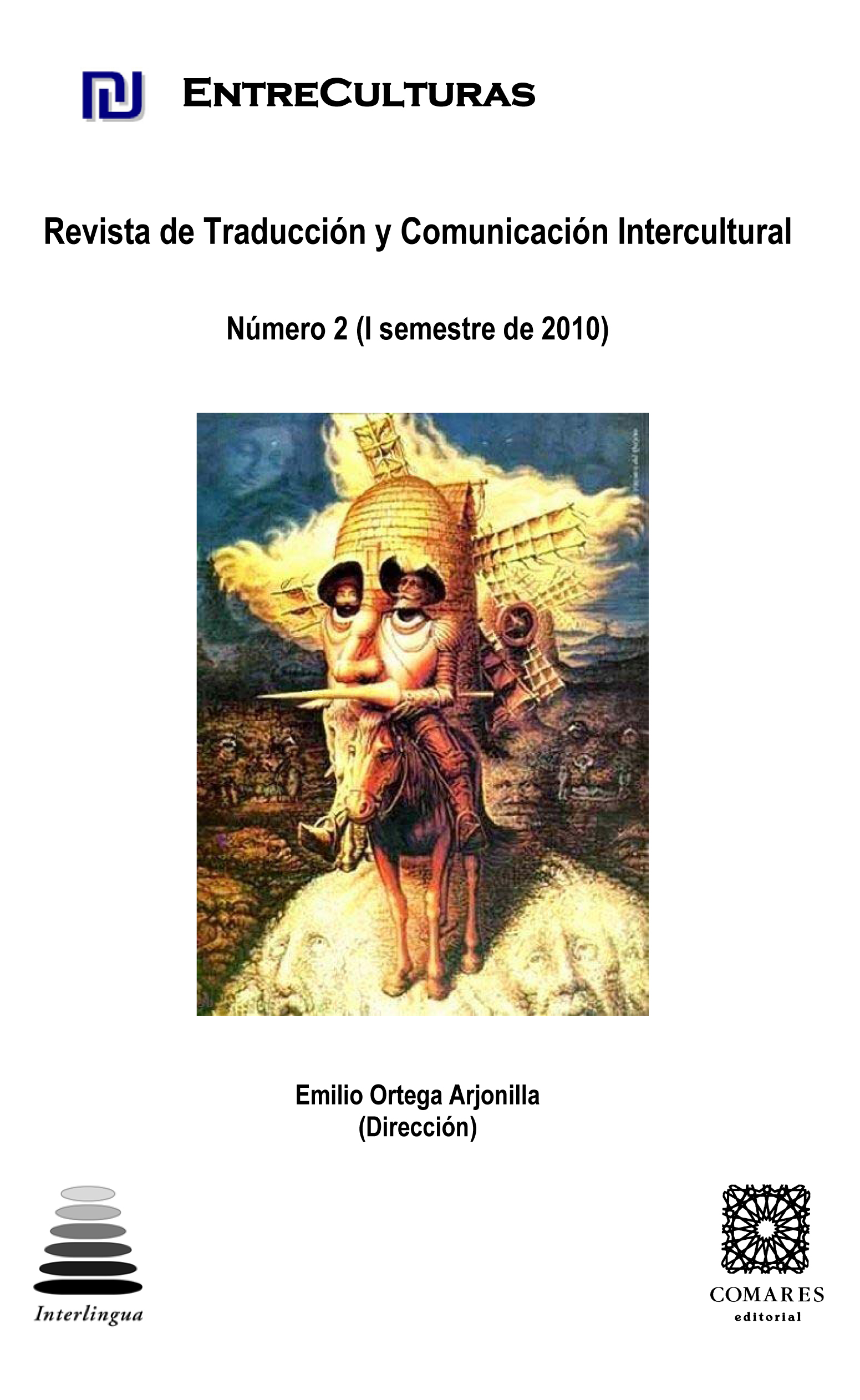TRADUCIR EL CINE, TRADUCIR EL DIALECTO: ESTUDIO LINGÜÍSTICO DE LA PELÍCULA ROMANZO CRIMINALE
DOI:
https://doi.org/10.24310/Entreculturasertci.vi2.11765Keywords:
language translation, cinema, translationAbstract
This article is based on the analysis of four scenes of the Italian movie Romanzo criminale, directed by Michele Placido in 2005. The aim of our article is the study of the translation of language variation in Spanish dubbing, particularly the translation of dialect, although also the other types of variation get analyzed and described.
Downloads
Metrics
References
BERRUTO, G. (1995): Fondamenti di sociolinguistica. Bari, Laterza.
CHAUME VARELA, F. (2004): Cine y Traducción. Madrid, Cátedra.
DE CATALDO, G. (2002): Romanzo Criminale. Turín, Einaudi
D’ACHILLE P., GIOVANARDI C. (2001): Dal Belli ar Cipolla. Conservazione e innovazione nel romanesco contemporaneo. Roma, Carocci.
MARCO, J. (2002:) El fil d’Ariadna. Anàlisi estilística i traducció literària. Vic, Eumo Editorial
RABADÁN, R. (1991): Equivalencia y traducción, Problemática de la equivalencia translémica inglés-español. Zamora, Universidad de León.
RAFFAELLI, S. (1985): “Cinema e dialetto: lineamenti di storia e prospettive di studio”, en Bollettino dell'Associazione italiana di cinematografia scientifica, Roma, 7-13.
ROSSI, F. (1999): “Realismo dialettale, ibridismo italiano-dialetto, espressionismo regionalizzato: tre modelli linguistici del cinema italiano”, Florencia, LABLITA Universitá di Firenze, edición en linea: http://lablita.dit.unifi.it/ [18-1-2010]
SANGA, G. (2003): “Gerghi” en A. Sobrero: Introduzione all'italiano contemporaneo. La variazione e gli usi. Bari, Laterza.
ZARO VERA, J. J. (2001): “Conceptos para el análisis del doblaje y la subtitulación” en M. Duro Moreno (coord.): La traducción para el doblaje y la subtitulación. Madrid, Cátedra.
Downloads
Published
How to Cite
Issue
Section
License
All contents published in Entre culturas. Revista de traducción y comunicación intercultural are protected under the Creative Commons Attribution-NonCommercial-ShareAlike 4.0 International (CC BY-NC-SA 4.0) license. All about this license is available in the following link: <http://creativecommons.org/licenses/by-nc-sa/4.0>
Users can copy, use, redistribute, share and exhibit publicly as long as:
- The original source and authorship of the material are cited (Journal, Publisher and URL of the work).
- It is not used for comercial purposes.
- The existence of the license and its especifications are mentioned.
There are two sets of authors’ rights: moral and property rights. Moral rights are perpetual prerogatives, unrenounceable, not-transferable, unalienable, imprescriptible and inembargable. According to authors’ rights legislation, Entreculturas. Revista de traducción y comunicación intercultural recognizes and respects authors moral rights, as well as the ownership of property rights, which will be transferred to University of Malaga in open access. The property rights are referred to the benefits that are gained by the use or the dissemination of works. Entreculturas. Revista de traducción y comunicación intercultural is published in an open access form and it is exclusively licenced by any means for doing or authorising distribution, dissemination, reproduction, , adaptation, translation or arrangement of works.
Authors are responsable for obtaining the necessary permission to use copyrighted images.





7.png)
